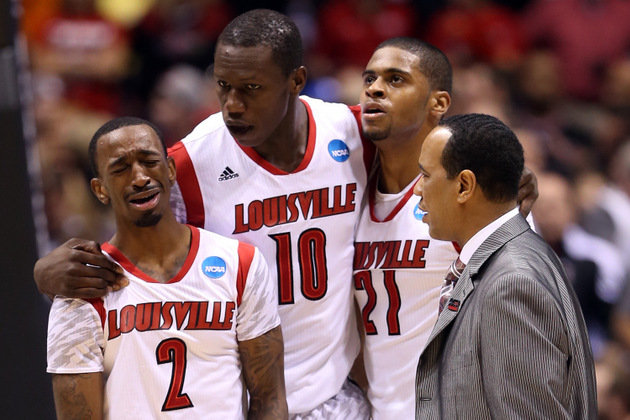
Louisville Cardinal players react to Kevin Ware's leg injury during March Madness. Image Credit: Yahoo Sports
I’ll admit, I stayed up way past my bedtime last night listening to the Boston police scanner, following as closely as I could the developments in the Boston Marathon bombing. In the wee hours of this morning, I thought about documenting the dozens of news items (as well as widespread speculation across message boards and social media) to take a tally of how much of the information proliferating in the uncertainty of Friday morning would be disproved by Friday afternoon.
As I began the project, it soon proved futile—there was far too much information and I ran into (as I might have anticipated) problems discerning journalistic fact from fiction right from the get go. It was only when I stopped documenting and trying to quantify the evidence that I began to think about the relationship between violence and speculative practice and assemble a quite different archive. [GORE WARNING: the images beyond this cut are NSFW and may shock and disturb some viewers. Discretion is advised.]
Recent comments
2 years 29 weeks ago
2 years 44 weeks ago
2 years 44 weeks ago
2 years 50 weeks ago
3 years 4 weeks ago
3 years 4 weeks ago
3 years 4 weeks ago
3 years 6 weeks ago
3 years 6 weeks ago
3 years 6 weeks ago